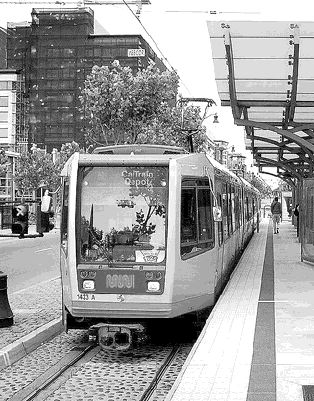14 Errors in anti-Light Rail thinking

I’m part of a group called Hamilton Light Rail which has been pushing for the development of a european-style light rail (aka Tram) in Hamilton. Recently the Hamilton newspaper The Spectator published an anti-LRT rant by a businessman who owns, among other things, a car wash. His opinion piece is so full of factual errors that I couldn’t resist making a list. I actually found 14 factual errors (that is errors that require no argument, simply a correction of information from easy to access sources). So, without further adieu (sic) here it is:
- Chicago does not have a light rail. (It does have a heavy / commuter rail system. There was an LRT proposal in Chicago which was cancelled at an early stage.)
- Detroit does not have a light rail. (There is discussion underway to develop one.) (It does have a medium/heavy rail rapid transit line which loops overhead, running the same system as Scarborough RT.)
- Hamilton employment in 2008 was 362,000. I don't know how much of that is downtown.
- The LRT project in Hamilton began moving in 2007, whereas issues related to the Pan Am games did not arise until 2009. Metrolinx plans, and LRT in Hamilton in particular, were already firmly developed, including routes and support statements from different government levels, before the Pan Am games began to influence planning.
- The 2007 Pan Am Games in Rio attracted in the range of a billion viewers, so it's difficult to assert that people haven't watched it.
- When you drive to downtown and park you face the same issues of finding a parking location as you do if you drive to an LRT terminal.
- The US Department of Energy projects that gasoline prices could double in the next decade (AEO2009).
- Downtown will not be closed off. One recent proposal suggests a pedestrian zone for one block (TODO I can't find the source) of King Street.
- Downtown parking garages will still be accessible by cars either from the reduced lanes, or in the case of a pedestrian zone, from the opposite street. For example, Denningers (outdoor) parking lot is accessible from both King and Main.
- Statements regarding access to business assume that shoppers drive to a parking lot in front of their target business, make a purchase, get in their car and drive to the next business. In fact today even with our current car centric model that is not the case in downtown Hamilton. Many shoppers drive to the vicinity of the business, park, and then visit multiple stops on foot.
- LRT plans do not include removing sidewalks. Pedestrian areas would increase.
- Parking provisions should naturally be different in areas with different densities of population and business, including differences between the mountain and downtown.
- An overhead railway proposal for Hamilton in the early 80s was roundly and appropriately dismissed due to the effect it would have on the street environment. The few overhead railways that have been built worldwide do not share the success of on-street LRT. Manhattan recently converted its defunct Elevated railway platforms into garden parks.
- LRT does not require 20 metres width. Each direction requires the width of one standard lane of traffic, which is 11-12 feet wide (3.5 metres).